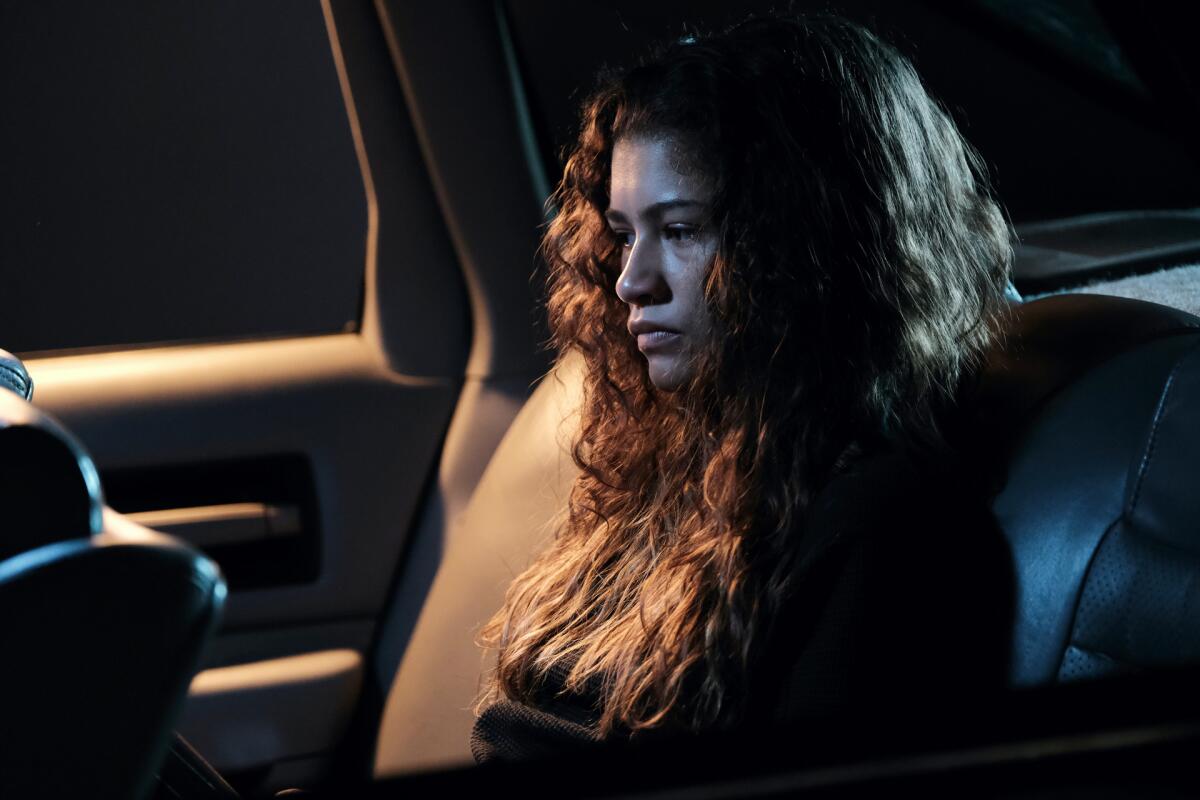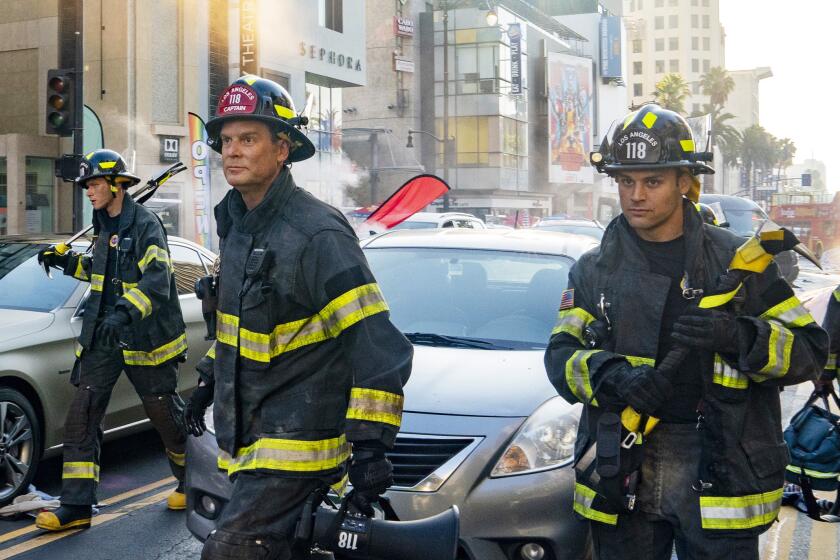A record quarter for filming in L.A. obscures Hollywood’s complicated recovery story

- Share via
Filming in Los Angeles rose to a record in the fourth quarter of last year as Hollywood recovered from the COVID-19 doldrums.
But data for the full year reflected a more complex narrative for the business of local film and TV production, with uncertainty continuing into 2022.
The quarter that ended in December set an all-time high of 10,780 shoot days in Greater Los Angeles, according to FilmLA, the nonprofit that handles film permits for the city and county. The tally was 4% above the previous three-month record of 10,359 shoot days set in the final quarter of 2018.
Omicron is being felt by the film and TV industry, as Hollywood productions delay the restart to work in the new year.
FilmLA’s data include shooting days for feature films, television and commercials, as well as other productions such as student films and music videos.
The fourth quarter marked an increase of 6% from the previous three months and a 46% jump from the same period in 2020, reflecting the industry’s ongoing rebound from pandemic-driven restrictions and delays for film and TV sets.
However, the data for the full year paint a complicated picture for the entertainment industry’s return to work, which has followed the ebbs and flows of the ever-changing public health situation.
The total number of shoot days for 2021 was 37,709, up about 3% from the pre-pandemic year of 2019. But the annual total fell shy of the peak of 39,627 set in 2016, as well as the tallies logged in 2017 and 2018.
Shooting in 2021 was down 1.6% from the average of the four years preceding the pandemic, FilmLA said. Last year got off to a slow start as networks, studios and production companies paused productions amid a surge in COVID-19 cases.
While FilmLA President Paul Audley called the latest report “encouraging,” he also sounded a cautionary tone, noting that the spread of the highly contagious Omicron variant of the coronavirus hindered return-to-work plans at the start of this year.
“This is an encouraging report by most indicators, but how production will fare in 2022 remains uncertain at this time,” Audley said in a statement. “Just as 2021 got off to a slow start, the new year has filmmakers feeling cautious, with many studios and production companies delaying their return to filming. Our hope is that 2022 follows a similar trajectory as last year — with a slow, responsible start and strong end-of-year finish.”
Television continued to be the largest category, picking up the slack as movies struggled. TV productions accounted for 4,925 shoot days in the most recent three-month period, similar to the previous two quarters.
For the full year, television contributed a record 18,560 shoot days, up 37% from 2019, reflecting the high demand for TV programming. Nearly half of the shoot days recorded by FilmLA last year were for television production, the group said. Shows that shot locally in the quarter included the CW’s “All American,” FX’s “Snowfall” and HBO’s “Euphoria.”
Feature films, meanwhile, were hammered in the quarter, contributing a mere 907 shoot days. That was down 17% from the average of fourth quarters from 2016 to 2019. Last year ended with a total of 3,406 shoot days for features, down 19% from the annual pre-COVID-19 average, FilmLA reported.
Movies that filmed locally included four Netflix films: “Me Time,” “Your Place or Mine,” “The Gray Man” and an untitled Jonah Hill picture.
Commercials were steadier, ending the fourth quarter with 1,249 shoot days, which was down slightly from the pre-COVID-19 quarterly average of 1,277. Commercial production generated 5,319 shoot days for the full year, down 3% from the average of the four years before COVID-19 hit.
Hollywood is dealing with the latest COVID-19 surge in infections as a result of the new Omicron variant
In addition to television, the quarterly production record was also driven by a category FilmLA designates as “other,” which includes photography, student films, documentaries, music videos and miscellaneous permitted events.
Those projects contributed 3,699 shoot days from October to December, a 46% increase from the third quarter. However, the full-year total for “other” (10,424 shoot days) was nearly 24% less than the pre-COVID-19 average.
More to Read
Inside the business of entertainment
The Wide Shot brings you news, analysis and insights on everything from streaming wars to production — and what it all means for the future.
You may occasionally receive promotional content from the Los Angeles Times.













